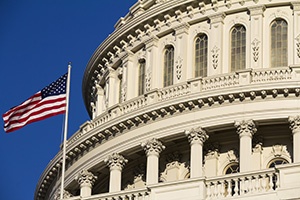 As I have been saying, things are pretty good, economically speaking, as we approach the end of the year. At the same time, there are some significant risks in the next couple of weeks that we need to keep an eye on.
As I have been saying, things are pretty good, economically speaking, as we approach the end of the year. At the same time, there are some significant risks in the next couple of weeks that we need to keep an eye on.
Tax reform bill
The first is all over the news: the Republican effort to pass a tax reform bill. Markets have moved up over the past several days as the bills have cleared successive hurdles. Clearly, the market likes what it sees, and for good reason. (See my previous post on the tax bills.) At the same time, were the bill to fail—still a very real possibility—those gains might disappear as quickly as they came.
This risk, however, is very much in the public view. As such, it is probably already priced in. It is something to keep an eye on but likely not to be too disruptive, even if the bill fails.
Potential government shutdown
The other risk is one that is not getting enough attention. I’m speaking of the pending deadline, on December 8 (next Friday), when funding for the government runs out. On that day, the U.S. debt ceiling extension ends, the government cannot borrow any more money, and—if Congress (including both Republicans and Democrats) can’t come to some sort of an agreement—the government shuts down.
Now you might argue that a government shutdown is not important. After all, it has happened before, with no real damage apparent at this point. So, what’s the big deal?
The political gap between the parties continues to widen. Democrats recently pulled out of a meeting with President Trump to discuss the matter. Even worse, the political gap within the Republican Party remains wide as well, with a considerable proportion of the caucus angry over the last debt ceiling extension. Even worse than that, with a significant part of the tax reform debate centered around increasing the deficit, which would require multiple votes to increase the debt ceiling, the timing is even worse than usual. The chances for a shutdown, therefore, look greater than they would be otherwise.
The economic damage, while not crippling, is real. Government spending will certainly decline, and spending from government employees who don’t get paid will decline as well. I’d say a reasonable estimate of direct economic damage would be around 0.25 percent of GDP per week for as long as the shutdown persists. It’s not the end of the world, but it certainly isn’t nothing either. It’s also probably not enough economic damage to force Congress into an agreement any time soon, which means that drag could go on for a while.
The markets have risen on rising confidence (consumer and business) and economic growth. A shutdown could damage both, with short- and long-term effects. With interest rates set to rise, a government shutdown on top of that could be another hit to investor confidence, and it could conceivably be what pushes us into a correction. It’s not a certainty, but it’s something to watch out for, particularly as markets have been so calm recently.
Plan for volatility ahead
I don’t want to overstate the risks here. As I have noted, the real economic risks are not severe. But I do think that piling this kind of political uncertainty on top of the existing economic and financial risks around the world is bound to have a negative effect on markets. Investors should expect more volatility and plan ahead for it. Once again, the news is all about Washington—and it could turn out to be unsettling.


 Print
Print

